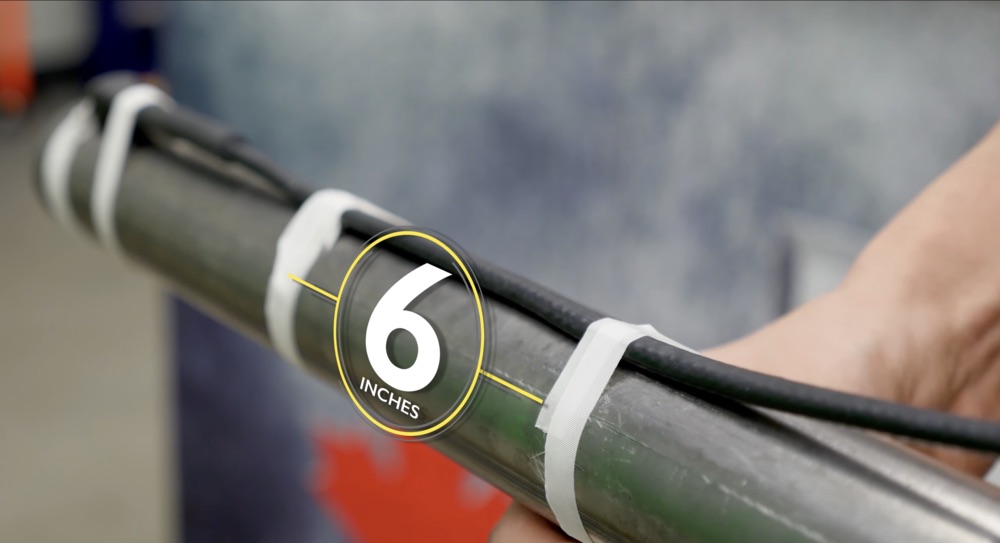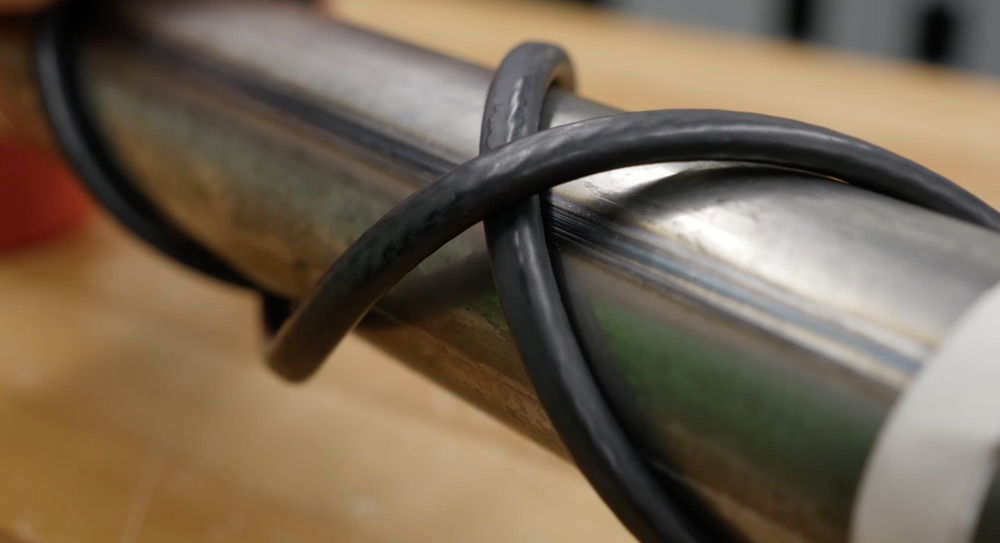Winter presents its own set of challenges, from slippery walkways to holiday planning. However, an often-overlooked area in preparation for winter: frozen pipes. It’s a frustrating issue that can greatly disrupt our daily routines and overall peace of mind during the cold season. Fortunately, an effective solution lies within reach: heat tape for water pipes. Roto-Rooter provides heat tape installation and frozen pipe repair services in Alabama, and we can get your pipes thawed and back up and running in no time.
This comprehensive guide explains everything there is to know about heat tapes!
What Is Heat Tape for Pipes?
Heat tape (also referred to as heating cable) is a flexible wire designed to keep pipes warm in order to prevent them from freezing over. Heat tapes produce warmth through electrical resistance when connected to power sources. Some of them come equipped with thermostatic controls so their temperature can be easily adjusted according to weather conditions.
Heat tape for water pipes can make the difference between an enjoyable winter season and unexpected, costly repairs. Therefore, it is crucial that you understand its functions and applications.
Types Of Heat Tapes
There are three primary types of heat tape available today, each designed to meet specific requirements:
Self-Regulating Heat Tapes
Self-regulating pipe heating tapes respond to environmental temperatures by automatically increasing or decreasing output depending on ambient conditions. This feature makes self-regulating pipe heating tapes safer and more energy efficient than their counterparts as they only heat up as much as necessary; however, they tend to be more costly.
Non-regulating Heat Tape
Non-self-regulating heat tapes provide constant heating regardless of ambient temperature. They are often cheaper than self-regulating tapes but potentially risky due to their constant output. Also, these tapes could waste energy by continuing to warm when it isn’t necessary. These tapes should only be used where temperatures consistently remain under freezing point.
How Heat Tapes Protect Pipes from Freezing
Heat tape works by providing an indirect source of warmth directly to your pipes to keep water from freezing inside them and expanding and bursting the pipelines. A broken water pipe can not only be an inconvenience but can cause lasting structural damage to your home as well.
Heat tapes can be wrapped around pipes or laid along their length and connected to an electrical outlet for plugging in, with their internal thermostat controlling its output accordingly. In some instances, some models are specifically designed to be installed directly inside pipes that have already been insulated.
Benefits of Heat Tape for Pipes
Heat tape offers multiple advantages for your pipes:
Heat Tape Prevents Frozen Pipes
The main goal of heat tape is to protect pipes from freezing in winter months, thus decreasing the risk of pipe bursts and subsequent water damage.
Cost-Efficient Solution
Heat tapes offer an economical solution to the high costs associated with burst pipes.
Installation is Simple
Heat tape installation can typically be accomplished without difficulty by most homeowners themselves.
Versatility
This device can be used on both metal and plastic pipe installations.
Energy Efficient
Modern pipe heating tapes can be configured to self-regulate, meaning they adjust power usage based on temperature fluctuations resulting in significant energy savings.
By following these steps, you can ensure efficient and safe use of heat tapes to keep your pipes from freezing during colder months.
How To Install Heat Tapes Properly

Implementing heating tapes correctly is critical to protecting your pipes from freezing. Here’s a step-by-step guide that can assist:
First Step in Selecting Heat Tape: Invest time in selecting an ideal heat tape to meet your needs. Ensure it fits within your plastic or metal pipes’ specifications as well as being approved by an established testing agency for safety purposes.
Clean-Up Pipes: Prior to installing heat tape, make sure your pipes are clean and dry. This is because dirt, grease, or moisture build-up could reduce its performance as an adhesive and compromise its effectiveness.
Apply the Heat Tape: Follow the manufacturer’s instructions when applying heat tape along a pipe, as some heat tapes are designed for wrapping around pipes while others should run alongside their length.
Secure the Heat Tape: Once applied, secure your heat tape using quality electrical tape or cable ties as directed by its manufacturer. Be careful not to overlap it, as this could lead to overheating.
Connect the Heat Tape: For optimal safety, connect your heat tape to a Ground Fault Circuit Interrupter (GFCI) protected outlet. A GFCI outlet will immediately switch off the power if it detects current flowing along unintended routes, such as water or people, providing another layer of safety for you and others nearby.
Safety Precautions
Pipe heating tapes can be an invaluable resource, yet it is critical that users follow a few crucial safety protocols:
- Only purchase heat tape that has been tested and approved by a credible testing agency.
- Follow the manufacturer’s installation instructions carefully to avoid creating fire hazards.
- Regularly test it to ensure its functionality and replace when wear-and-tear becomes evident.
- Do not cover it with insulation until instructed by its manufacturer that this is safe to do so.
Ensure Reliable Water Pipes with Heat Tapes
Heat tapes for water pipes are an efficient and cost-effective solution to avoid frozen pipes in colder months. By embracing them, both homeowners and businesses can avoid costly damages and disruptions from frozen pipes during harsh winter conditions.
Roto-Rooter provides outstanding plumbing services, including heat taping for water pipes. Our professionals are ready to meet all of your plumbing needs 24/7/365 (even in holidays!). Don’t hesitate to reach out for any inquiries.



